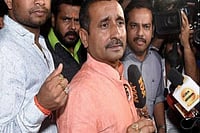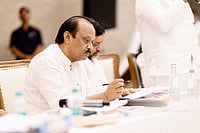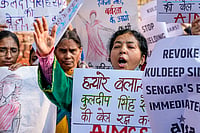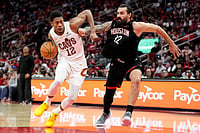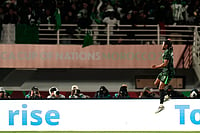Only a few sectors in India can represent the term 'cut-throat competition' better than consumer durables. Still fewer sectors will witness a slowdown in 2005. Consumer durables is one. In fact, it's possibly the only sector where sales have fallen in the first nine months of the current year. Therefore, it's not surprising that durables firms are focusing their energies—and strategies—to push sales in the coming festive season. It's only going to get better for the consumers, who have been seeing prices fall in this sector over the past decade.
"Sales have been flat this year, and despite what companies say, there will be an actual discount of almost 15 per cent when the season hots up," says B.A. Kodandarama Setty, MD, Viveks, Chennai, one of India's largest consumer durables retailers. Retailers in Delhi admit that colour television (CTV) prices will fall by 10-15 per cent compared to last year, and the effective discounts on refrigerators and washing machines carrying a price tag of
Rs 15,000 may be in the region of Rs 1,500. Although most companies insist prices will remain firm and managements maintain they'll stick to the traditional route of pushing sales through promotioal campaigns, things are likely to change.
For one, the fringe benefits tax (FBT) on gifts and freebies may force them to resort to more direct price cuts. Girish Rao, head (sales), LG India, says, "FBT is a necessary evil for all durables firms. Margins will be affected, but consumers expect us to incentivise their purchases through gifts. So we will have to stick to the practice." While the general perception is that sales promotion expenses will be taxed at 6.66 per cent (FBT), the finance ministry recently said it may go up to 16.8 per cent if an add-on gift forms a part of the promotional campaign. Usually, the durables industry's spending on promotions and advertising during the months of October and November is close to Rs 350 crore.
But there's a deeper reason to believe that prices will be slashed next month. In the first three quarters of 2005, CTVs, which account for almost 60 per cent of the industry's sales, witnessed a decline of 1 per cent. The industry estimates that sales will have to increase by over 40 per cent in the last three months of the year to even match the figure of nine million units sold last year. For managements, who had become used to growth rates in the region of 20 per cent, this is uncharted and unknown territory. This is why dealers and distributors expect firms to resort to heavy duty discounting during the two-month festive season, which accounts for 40 per cent of annual sales, to boost volumes.
Finally, the combination that may work is a mix of both—gifts and price cuts. For example, to circumvent the FBT problem, Philips, besides cutting its CTV and audio system prices, is doling out tickets for the Football World Cup to be held in Germany next year. Others, too, are trying new permutations. Companies say that as Diwali draws near, there will be new offers without the promise of gifts. Instead, high end-purchases will be incentivised with holiday packages and free dinners at fancy restaurants. Instead of giving away products like DVD players as freebies, firms may bundle such products with CTVs as home theatre systems and sell them at attractive prices.
Last year, after relatively poor monsoons in several key markets, the festive season raised the flagging spirits of the consumer durables sector, which saw a 30 per cent growth in the two months and earned revenues of Rs 4,500 crore. "This year, too, we will see a growth in the same region. The market conditions are good and consumer sentiment is high enough for the industry to achieve decent growth," predicts Girish Bapat, V-P (marketing), LG.According to Bapat, new and high-end products like DVD players and microwave ovens should help restore profitability.
For example, LG still expects sales close to Rs 1,600 crore during this year's festival season, compared to Rs 1,200 in the same period last year. Its Korean rival Samsung is also optimistic about selling five lakh CTVs to achieve a 30 per cent increase and Rs 625 crore in sales. "There has been a good response to the promotional schemes during the Onam festival in Kerala this month, indicating that the overall consumer sentiment is high and there is a latent demand in the market," says Ravinder Zutshi, deputy managing director, Samsung India.
But this year seems to be a tough one. First, until now, profit margins have steadily fallen as the cost of inputs like steel and plastic has skyrocketed, and yet, product prices have remained stagnant due to the intense competition. Although unit sales in the case of large segments like CTVs and refrigerators have increased over the years, value realisations per unit have fallen consistently. Therefore, manufacturers have had to sell more to prop up their toplines and bottomlines. The pressures are mounting this year. Both CTVs and refrigerators sales have dipped by five per cent. This despite the fact that most players have tried aggressively to push high-end products—which are more profitable and yield higher unit realisations—such as flat TVs, frost-free refrigerators and fully automatic washing machines.
"The major reason why sales seem to be slowing down this year hasn't got much to do with the consumers. It's because most manufacturers haven't tapped the rapidly growing rural and semi-urban markets. Also, more sophisticated retail chains in urban areas could offer consumers better prices and more choices," says Arvind Singhal, chairman, KSA Technopak, a leading retail consultancy. In addition, a significantly larger base and India being the fourth largest CTV market in the world, only behind China, US and Japan, makes it natural for sales to start tapering a bit.
"None of the players have had the courage to undertake a real price hike. Even the price hikes that are announced are taken care of by some dealer discount schemes. But on the brighter side, the sector has done well to stay above water by increasing its manufacturing and supply-side efficiencies," explains Vineet Nigam, consumer durables analyst at icra. Worse, admits LG's Rao, last year's growth drivers like the Pakistani cricket team's tour of India, the ICC Champions Trophy and, yes, the fact that the Indian team was performing well, are missing. "There is a lack of excitement. And the confusion with regard to VAT in April and May adversely impacted sales," he adds.
So, there's only one way for prices to move—southwards. Or the incentives may become mouth-watering. In the end, the consumers will have a happy festive season. Do we see you making a list of durables you wish to buy next month?
Blood On The Shopfloor
As the consumer durables market struggles to match last year's sales, the next quarters will be crucial.

Blood On The Shopfloor
Blood On The Shopfloor
Published At:
MOST POPULAR
WATCH
MORE FROM THE AUTHOR
×













